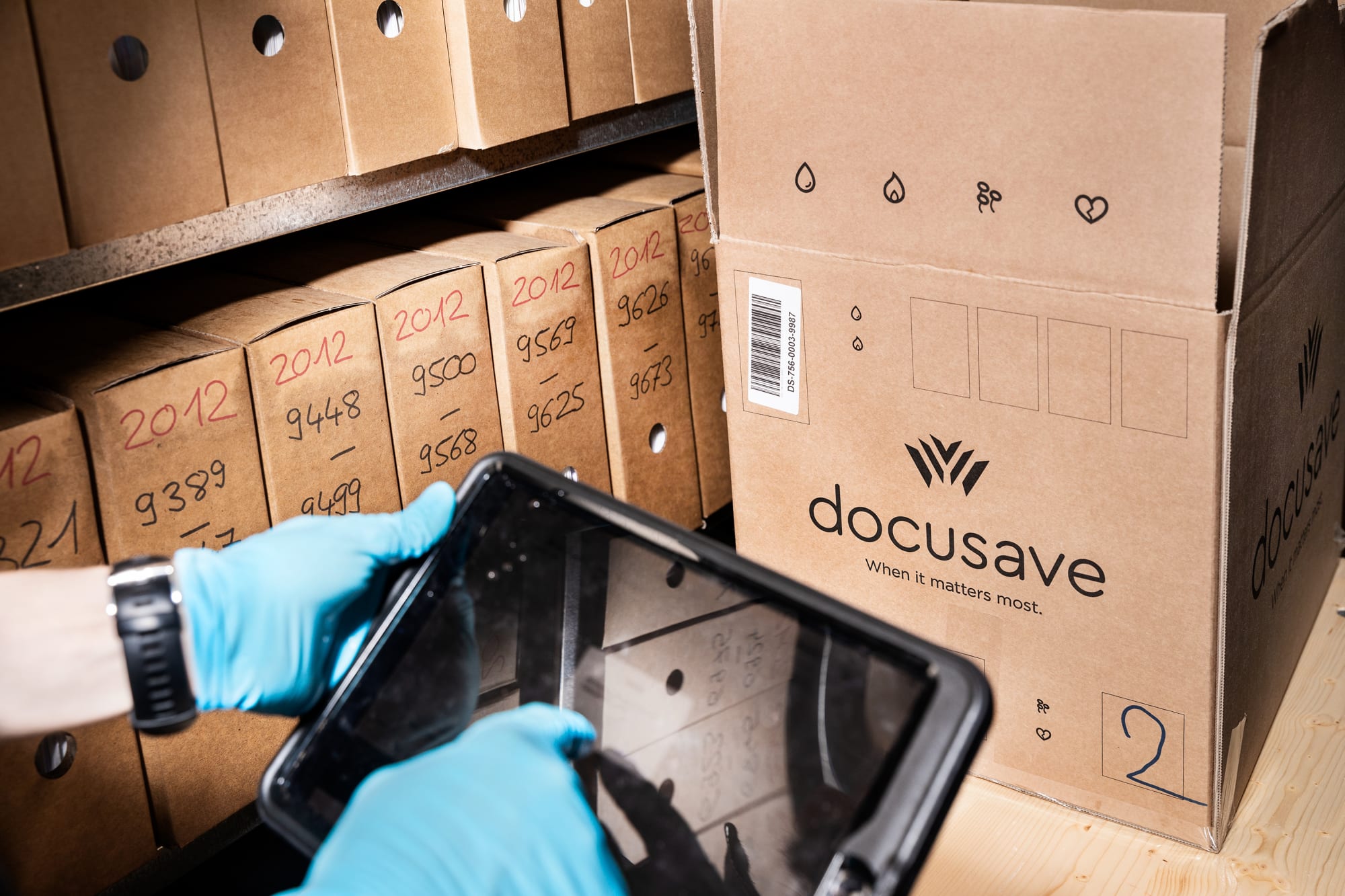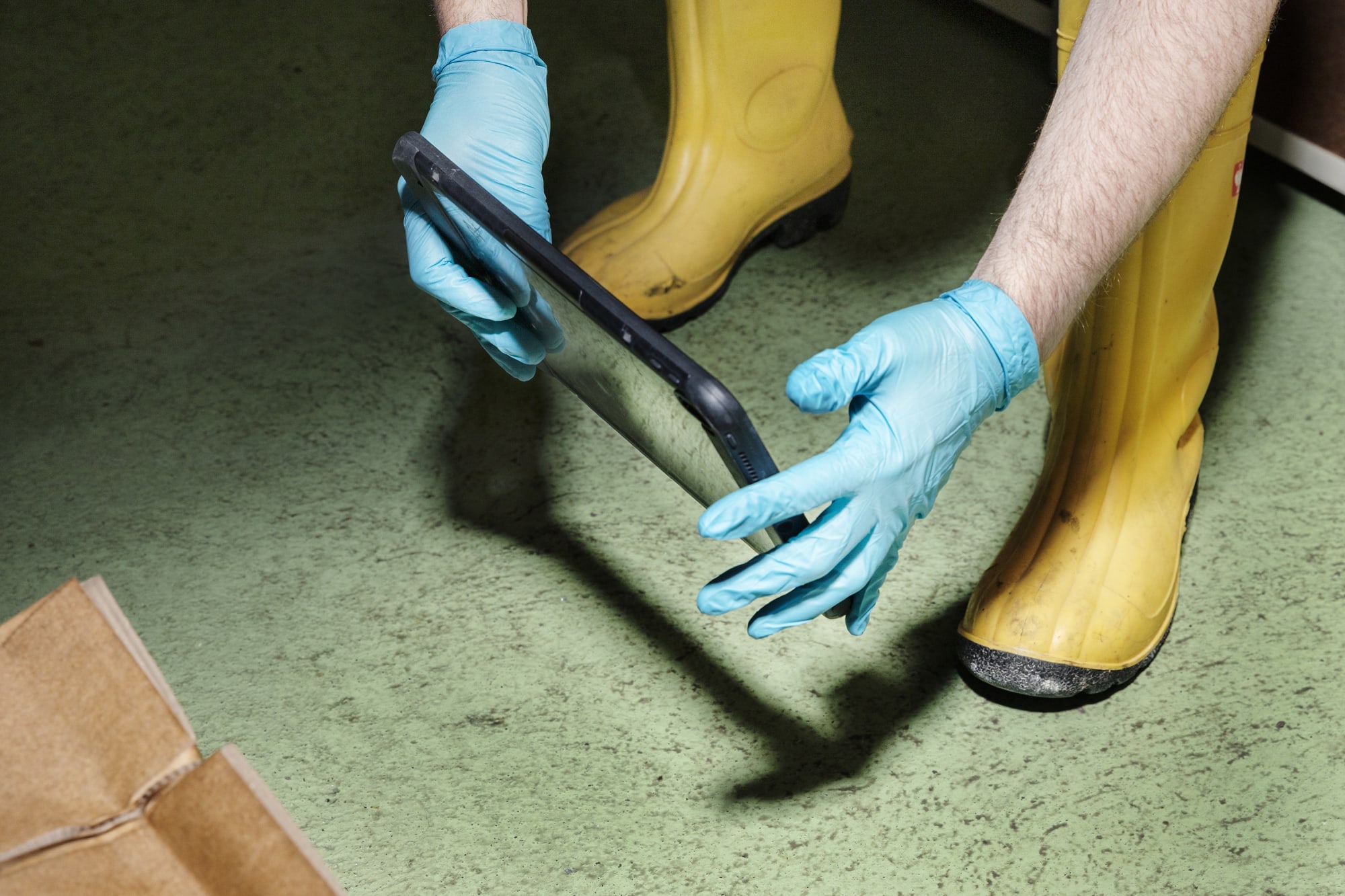Efficient logistics are indispensable in chaotic situations.

LOGISTICS
Every minute counts.
Speed is essential in a recovery operation, but never at the expense of the documents being saved. And logistics measures must be put in place long before the fire hose begins to pump water. Are there enough human and material resources? Is everything ready for use? Have transport and storage capacities been organised? Have time-consuming bureaucratic matters been taken care of in advance? Has cost coverage been agreed with the insurance company? How will the damage be documented?
Ready to go. Always.
In addition to our capacities for transport, dry storage, quarantine storage and freezer storage, we maintain permanent infrastructure in the form of equipment and emergency materials. At docusave, every piece of the puzzle fits.
Special measures for mould contamination.
Water-damaged objects are susceptible to mould. When dealing with mould-infested object, it’s important to make a clear separation between clean and contaminated areas to prevent the spores from spreading to non-affected rooms. The specific arrangements chosen depend on various factors – the volume of work, existing conditions, kind of contamination and the general environment (sensitive areas like hospitals, for example). The materials needed to construct the partition and the passageways are always at hand and ready for transport.
INVENTORY
The right inventory system ensures safety and traceability.

Precise object tracking during every stage of an intervention is vital.
What makes an indexing system good?
It’s critical that documenting objects causes no delays at any stage of the recovery, vacuum freeze-drying or remediation procedures. Otherwise, more damage occurs and data security is at risk.
Advantages of docusave’s indexing system.
Our system ensures complete traceability. Throughout the entire recovery and remediation operation, you know where each object is and what its current status is.
During the recovery phase.
- We retain and map the indexing system of your library or archives if it is still present or recognisable after damage occurs
- Object tracking is ensured throughout the entire recovery and the remediation intervention
- Traceability, legal certainty and data security are guaranteed
- Our photo inventory documents each object’s history – from the time we remove it for treatment until we return it.
After the recovery phase.
- You can also conduct restoration triage later at the computer
- On request, we grant access to individual objects during treatment or when being stored in docusave’s facilities
- The layout of the inventory can be adapted to the type of object (paper documents or artwork, for example)
During treatment.
- In the case of cleaning or decontamination interventions, our before-after indexing in the inventory system is a control and quality assurance measure
- The photo inventory is useful for ensuring clear communications between you and our team should questions arise during a treatment
During analysis.
The steps in an analysis – taking lab samples, for example, and assessments of the status quo – are documented. All measurement results and abnormalities are noted (RLU measurements, temperature, humidity, visible mould, soiling); this makes it possible to track which sample or measurement was taken from which object.
For confidential items.
In the case of confidential documents and materials, strict adherence to the inventory process and observation of safety standards throughout the entire operation are essential. At docusave, we’ve developed systems for ensuring strict confidentiality. Please contact us to learn more. We’re happy to answer your questions.